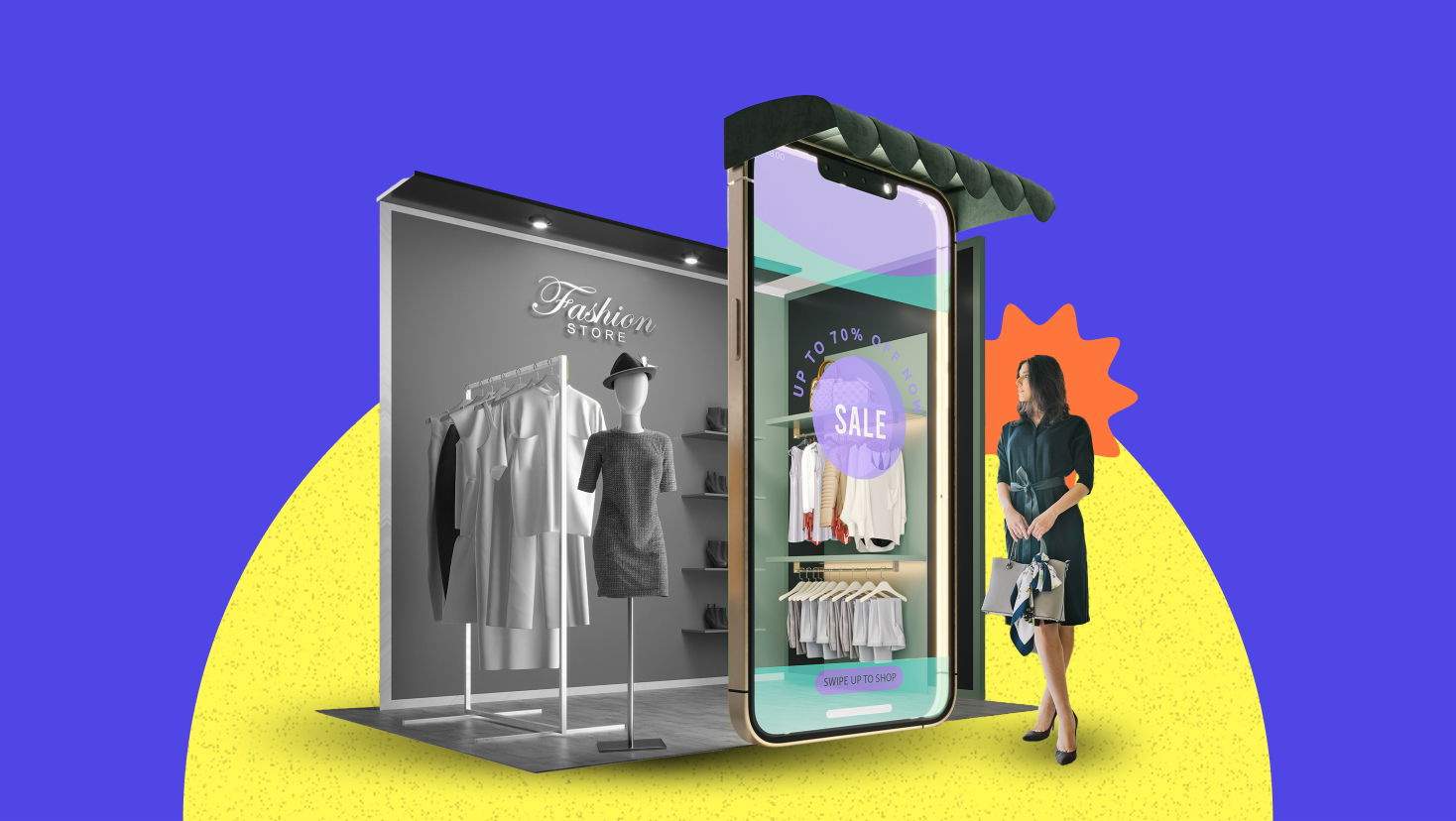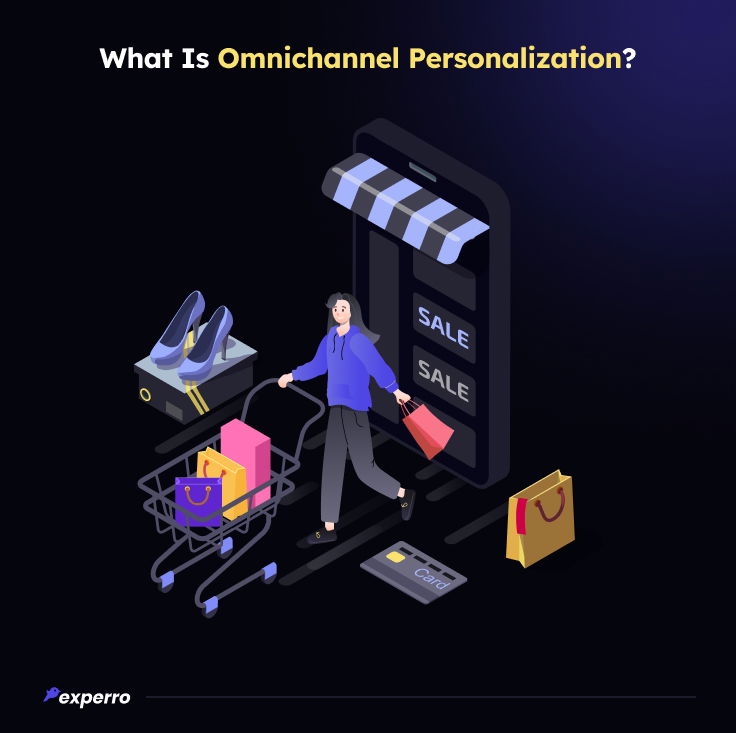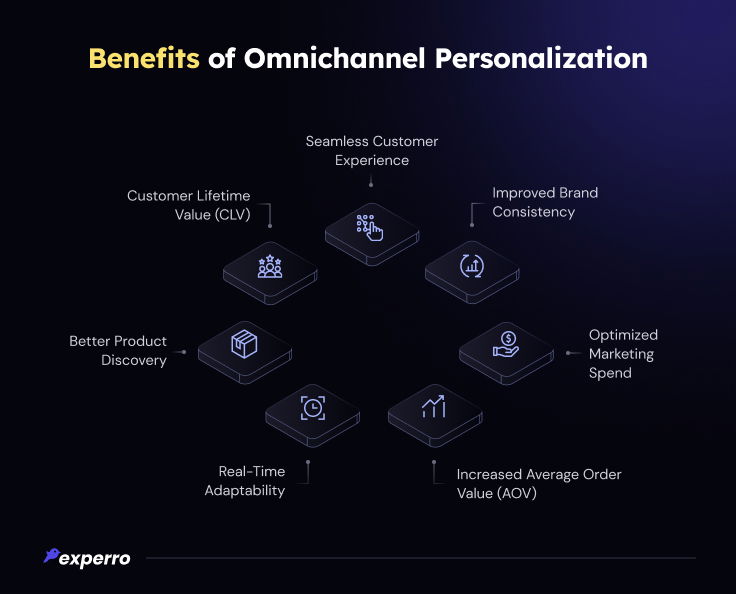How Omnichannel Personalization Multiplies Sales Figures?

What’s Inside
- What Is Omnichannel Personalization?
- Omnichannel Personalization Examples
- What Is the Difference Between Omnichannel & Cross Channel Personalization?
- What Are the Benefits of Omnichannel Personalization?
- How Can Experro Empower You With Omnichannel Personalization?
- Transform your customer experience with Experro’s powerful hyper-personalization
- Conclusion
Key Takeaways
- Omnichannel personalization creates a seamless and integrated customer experience across all channels, enhancing satisfaction, loyalty, and sales.
- The difference between omnichannel and cross-channel personalization lies in the level of coordination and consistency.
- Omnichannel offers a more unified and cohesive customer experience.
- Experro simplifies the process, enabling businesses to overcome the barriers to omnichannel personalization and interactions effectively, driving long-term growth.
Ever wondered how top brands deliver seamless, personalized experiences across all channels?
That’s the magic of omnichannel personalization!
Omnichannel personalization is a strategy that tailors customer experiences across multiple channels, ensuring consistency and relevance.
It involves using data from various touchpoints—like websites, apps, and physical stores to create a seamless and personalized journey for customers.
Additionally, by leveraging advanced analytics and AI-driven insights, companies can continuously refine their personalization strategies, ensuring that each customer touchpoint is optimized for maximum engagement.
As a result, businesses can create a more cohesive brand experience, fostering trust and long-term relationships with their customers.
What Is Omnichannel Personalization?

Omnichannel personalization definition - It is the process of creating a personalized and consistent experience for customers across all physical and digital channels, ensuring that each interaction is tailored to the individual, regardless of the platform they use.
This approach integrates a customer data platform from various digital touchpoints, using omnichannel personalization software and platforms to tailor interactions in real-time.
According to Think with Google, 90% of leading marketers believe unified shopping experience is key to business profitability.
Whether in B2B or B2C, omnichannel personalization solutions enhance customer engagement by delivering relevant messages and recommendations.
Omnichannel Personalization Examples
The omnichannel personalization examples illustrate how businesses tailor customer experiences across different channels.
Example 1 – In a furniture retail customer experience, a shopper browsing living room sets online later receives an email with personalized sofa recommendations based on their viewing history and style preferences.
Example 2 – In jewelry eCommerce, a mobile app uses AR in jewelry to let shoppers virtually try on rings and provides real-time inventory updates based on their location, helping them find the perfect piece nearby.
By leveraging an omnichannel eCommerce, businesses can achieve higher customer satisfaction and drive customer loyalty.
What Is the Difference Between Omnichannel & Cross Channel Personalization?
Understanding the difference between omnichannel and cross-channel personalization is essential for businesses looking to boost customer engagement.
Both strategies aim to enhance the entire customer journey but differ in scope and execution.
Below is a table outlining the key differences between omnichannel vs. cross-channel marketing personalization.
Aspect | Omnichannel Personalization | Cross-channel Personalization |
|---|---|---|
| Definition | Omnichannel customer personalization creates a unified experience across all channels. | Cross-channel personalization focuses on maintaining consistent messaging and branding across different channels, but not all. |
| Scope | Broad, covering every possible touchpoint including in-store, online, and mobile to create a cohesive journey. | Limited to selected channels, generally focusing on a few key platforms where the brand has a strong presence. |
| Integration | Requires deep omnichannel integration personalization to unify customer data across all platforms. | Involves integration across specific channels but may lack the continuity of an omnichannel approach. |
| Technology | Often supported by omnichannel personalization software and platforms. | Uses simpler tools that manage personalization across selected channels but without data integration of an omnichannel engine. |
| Customer Experience | Provides a seamless, unified experience across all touchpoints, leading to hyper-personalized omnichannel marketing. | Ensures consistency in messaging but may not provide seamless integration across different customer touchpoints. |
| Use Case | Ideal for businesses looking for an approach to customer engagement, such as B2B omnichannel personalization. | Suitable for businesses that want to maintain consistent branding and messaging across selected channels without full integration. |
| Challenges | High implementation costs and complexity, requiring significant investment in omnichannel personalization platforms. | Easier to implement but may not fully meet customer expectations for a unified experience. |
What Are the Benefits of Omnichannel Personalization?
A unified or omnichannel shopping experience offers significant advantages for businesses aiming to deliver consistent and personalized customer experiences.

Below, we explore key benefits that prove the importance of implementing personalization in your omnichannel marketing strategy.
1. Offer Seamless Customer Experience
A seamless personalization across channels ensures a smooth customer journey across all digital channels. Whether a customer interacts with your brand online, in-store, or through mobile apps, the omnichannel customer experience remains consistent and relevant.
This seamless integration is possible through omnichannel personalization platforms that connect customer data from various digital touchpoints.
As a result, customers feel understood and valued, leading to higher satisfaction and loyalty. Real-time data from omnichannel personalization software plays a crucial role in improving the customer experience.
2. Improved Brand Consistency
Personalization strengthens brand management by delivering consistent messaging and tailored offers across all channels.
This approach ensures that customers perceive your brand the same way, regardless of where they engage. Omnichannel integration personalization helps businesses maintain this consistency by unifying data silos and personalized communication strategies.
For example, using a single omnichannel personalization engine can streamline digital marketing campaigns and other efforts. This ensures your brand's voice and values are reflected across all touchpoints consistently.
3. Optimized Marketing Spend
Businesses can optimize their marketing spend by targeting the right customers with personalized messages.
An omnichannel personalization software allows for better resource allocation by focusing on channels that yield the highest returns and reduce customer acquisition costs. With precise targeting, businesses can reduce waste and improve ROI.
Omnichannel personalization solutions enable companies to track customer interactions across channels, helping to identify the most effective marketing strategies. This data-driven approach ensures that marketing budgets are spent efficiently.
4. Increased Average Order Value (AOV)
Omnichannel maturity model can significantly increase the average order value (AOV) by providing personalized recommendations. Customers are more likely to purchase additional items when they receive suggestions tailored to their preferences.
For example, omnichannel eCommerce personalization solutions can recommend complementary products during the checkout process.
This omnichannel strategy not only boosts sales but also enhances the overall digital customer experience. By leveraging omnichannel personalization examples, businesses can learn to craft offers that resonate with their audience, leading to higher AOV.
5. Real-Time Adaptability
One of the key benefits of omnichannel personalization is its ability to adapt to real-time content editing. With the help of advanced personalization platforms, businesses can respond to customers’ behavioral data.
This adaptability is crucial for delivering timely and relevant content. For example, if a customer abandons their shopping cart, an immediate personalized offer can be sent to encourage customers to complete the order.
Omnichannel personalization solutions make this possible by continuously analyzing data and adjusting strategies, ensuring customers receive the most relevant experiences.
6. Better Product Discovery
Omnichannel personalization enhances product discovery with AI and machine learning by tailoring the shopping experience to individual customer preferences. Customers are presented with products that match their tastes, making it easier to find what they need.
Omnichannel personalization software utilizes data from purchase history or previous customer interaction to recommend items that align with customer intelligence through customer segmentation and eCommerce merchandising.
These personalized customer segments not only improve the shopping experience but also increase the chances of purchases.
With a well-implemented omnichannel personalization strategy, businesses can make product discovery more intuitive and enjoyable for their customers.
7. Increased Customer Lifetime Value
Furthermore, connected retail personalization significantly boosts CLV/LCV. By consistently delivering personalized experiences, businesses can build stronger customer relationships.
An omnichannel personalization engine allows for ongoing engagement, keeping customers coming back. This continuous personalization fosters loyalty, leading to repeat purchases and higher LCV.
However, there have been instances where bad personalization has done more wrong to the businesses than good.
By understanding the definition of omnichannel personalization and its impact, businesses can effectively increase their revenue through long-term customer retention.
Explore our blog on eCommerce personalization stats to see why personalization is key and get the latest industry info!
How Can Experro Empower You With Omnichannel Personalization?
Imagine delivering omnichannel personalized experiences to every customer, no matter where they interact with your brand.
Sounds tedious? It’s not as tedious as you imagine it would be!
Experro makes this simple with its powerful omnichannel content distribution through headless approach. We help you with personalized interactions across all channels, ensuring consistency and relevance.
Our omnichannel personalization software is designed to support both B2B and B2C needs, ensuring tailored customer interactions.
With Experro’s omnichannel personalization engine omnichannel personalization engine, you can craft hyper-personalized marketing strategies that resonate with the brand effortlessly.
Overcome omnichannel personalization challenges and drive your business objectives forward with Experro’s cutting-edge solution.
Conclusion
Adopting omnichannel CMS personalization allows your brand to achieve a unified customer view that drives long-term growth and success.
To succeed in eCommerce market, delivering consistent, personalized experiences across all channels is essential. Unified shopping experience helps businesses create these seamless experiences, boosting customer satisfaction, loyalty, and sales.
Experro's omnichannel personalization platform simplifies this process, enabling businesses to overcome challenges and scale personalized interactions effectively.
For more details on omnichannel transformation for your website, schedule a call with our experts.
FAQs


Pallavi Dadhich
27 August 2024Pallavi is an ambitious author known for her expertise in crafting compelling content across various domains. Beyond her professional pursuits, Pallavi is deeply passionate about continuous learning, often immersing herself in the latest industry trends. When not weaving words, she dedicates her time to mastering graphic design.